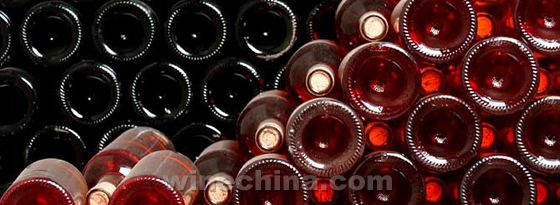Date£º
2014-03-12 13:34 Source£º
winesearcher Author:
Rebecca Gibb Translator:
While the rose boom might seem so noughties to Europeans, the dry ros?category is still in its infancy in the United States.

Dry rose sales represented just one percent of the U.S. market in 2013, according to market analysts Nielsen but it's growing at an impressive pace. Dry rose sales increased 29 percent by value and 17.6 percent by volume in 2013 while growth was even more impressive in the over-$12 category.
Figures released by retailer Wine.com last week reiterate the impressive growth of rose-sales were up almost 50 percent in 2013, albeit from a small base.
America is late in coming to the rose party. Michael J. Osborn, founder of Wine.com told Wine-Searcher it's taken a while to catch on: "We heard a lot about dry rose from sommeliers and the restaurant trade four or five years ago. The trend happened in San Francisco and New York but it wasn't a national phenomenon. It's now here."

Wine.com: Michael J. Osborn
The rose category has been dogged by blush wine, which is typically sweet. Indeed more than 70 percent of rose or- blush -wine produced in America has more than 20 grams per liter of residual sugar.
"I think some people blew it by making their rose so sweet. Pink wine in this country would always have a lot of residual sugar so a lot of people wouldn't be caught dead drinking a bottle. It took a while but we don't have to apologize any more for drinking pink," Osborn explained.
The U.S. is now playing catch-up. In France, rose represented 28 percent of all wines sales in 2012, overtaking white wine (France AgriMer).
Chardonnay and Cabernet rule the roost
The release of Wine.com's annual sales figures supports Nielsen data that Cabernet Sauvignon remains king and Chardonnay remains queen in the U.S. wine market, accounting for around 12 percent and 19 percent of all wines sold.
However, the hype surrounding the leaner, more restrained styles of Chardonnay emerging from California is just that -hype. The average Wine.com consumer is actually drinking the bigger, oaky, buttery styles, according to the list of its top 100 best selling wines last year.
"Our customers are still buying big Chardonnays: our most popular selling Chardonnay in 2013 was the Kendall Jackson Grand Reserve. While Mer Soleil from the Central Coast is unoaked, it has a lot of malo -you wouldn't confuse it any time soon with Chablis,"said Osborn.
Also making it into the top 100 were Rodney Strong's Chalk Hill and Cakebread Chardonnay. "We don't keep a year round supply of these wines and no retailer does because there's an insatiable interest in that big style Chardonnay and it remains that way. So far, I haven't seen much movement in people's taste. The volume is in traditional, malo and barrel-fermented Chardonnays."